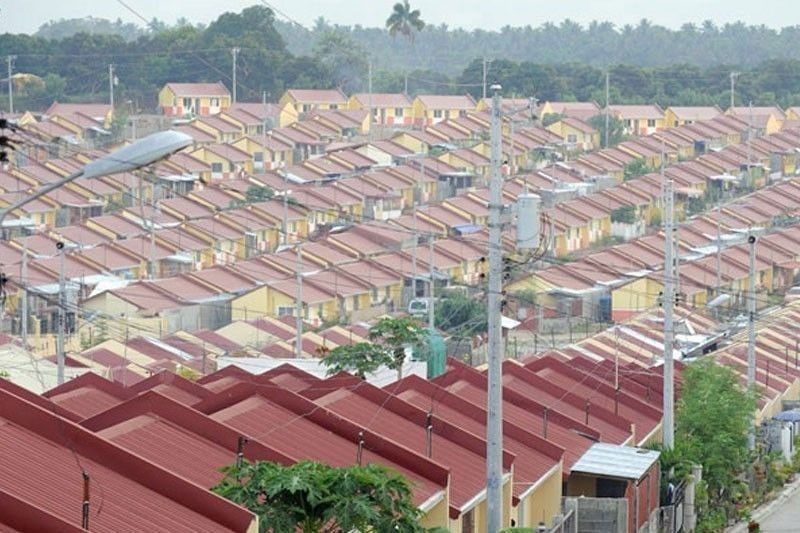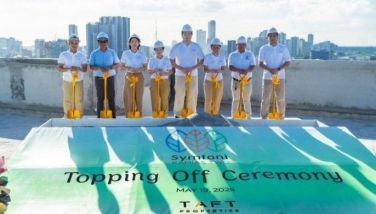Phl’s worsening housing backlog


The housing backlog in the country has already reached an alarming level.
A report by UN-Habitat estimates that housing need in the Philippines is projected to increase from 6.5 million to 22 million by 2040. It said that informal settler families are estimated at 3.7 million, half a million of which are living in slums and high-risk areas in Metro Manila or the National Capital Region.
Urban migration, a rising number of informal settlements, armed conflict, systematic inequity, and climate change are some of the main drivers that contribute to the growing housing need, the report noted. It added that the backlog is further worsened by declining housing production brought about by tedious bureaucratic regulatory and approving process, high reliance on private sector investment, and inadequate budget allocation for housing.
An official of the Department of Human Settlements and Urban Development (DHSUD) foresees the housing backlog in the country to reach the 10-millon mark by the end of President Marcos’ term from 6.5 million as of 2022.
There are those who say that at present, the housing shortage is around 6.5 million unit while some say it is as much as 10 million units. This is especially felt among lower income families and those in rural areas, who could not afford the upfront costs of purchasing a home as well as the voluminous bank requirements which include proof of capacity to pay.
According to a study by the Philippine Institute for Development Studies, housing availability has become a critical problem over the past decades, affecting both low-income families and the middle class. It noted that while house prices have surged, wages have risen slowly and this affordability problem manifests in the country’s persistent informal settlements, homelessness, congestion, and high costs of travel to places of jobs and livelihood.
It said that a typical Philippine family is severely constrained in buying a house on the market, even when assuming the provision of a lumpsum amount or a downpayment of 10 to 20 percent of the housing price. And this condition is more severe in highly urbanized locations like Metro Manila and urban areas of Cebu and Davao del Sur.
The study also pointed out that the limited capacity of a typical household in the country to access housing is evident in the comparison of residential housing price changes to average wage growth over time. For all types of housing, it said that the growth in average housing prices has outpaced the growth in manufacturing wages for the period 2016 to 2022, adding that the prices of condominium units, which are predominantly available in urban areas, has exceeded the growth in average manufacturing wages for both compensation and daily wage earners.
It emphasized that this trend implies that fixing housing prices to a low minimum for socialized and economic housing requires substantial government subsidies and support for the business sector to supply these types of housing units in the market.
The PIDS study stressed that the government’s policy to provide indirect subsidies like interest rate subsidies and tax incentives to the business sector to help households, especially low-income families, access housing in the market, will not suffice and that the disconnect between housing affordability and housing programs requires the government to reform policies to address distortions in the housing market.
It said that government must be wary of speculative increases in land and real estate prices which can be addressed by establishing an equitable and efficient valuation system for proper real property taxation and the expropriation of real properties, effective implementation of planning regulations such as transit-oriented developments and the idle land tax to reduce speculative forces on real estate prices, providing financial ceilings on loans to real estate to reduce over-borrowing by rich families for residential investments, controls on foreign ownership of residential condominium units, among others.
The study added that another area for policy reform is the overhaul of the housing program for the poor and vulnerable sectors. It explained that the traditional market-led build-and-sell solutions will not work and that the government needs to create a public housing fund to finance direct subsidies, public housing construction, and disaster recovery.
Building better cities responsibly
The country urgently needs to enhance its infrastructure and expand its housing supply to keep pace with rapid population growth and worsening traffic congestion. With as much as 10 million housing units needed to be built and recognizing the pressing need for infrastructure, government continues to push forward with major infrastructure initiatives, allocating as much as five percent of the gross domestic product to infrastructure development.
As urbanization accelerates, new cities must be built with sustainability in mind, prioritizing environmentally friendly materials with lower carbon footprints.
Cement, a fundamental construction material, is inherently carbon-intensive. To address this, the Department of Trade and Industry’s Bureau of Product Standards issued PNS 63:2019 on Blended Cement, a more sustainable alternative to Ordinary Portland Cement (OPC) or Type 1. This standard was developed in collaboration with industry experts and incorporates ASTM (American Standard for Testing and Materials) guidelines, customized for the Philippines’ unique climate and geological conditions. The revised standards align with global efforts to reduce carbon emissions in construction while ensuring the country’s infrastructure and housing needs are met.
We have learned that since 2021, the local cement industry has fully adopted these new standards, leading to changes in cement nomenclature. Cement industry experts explain that while OPC (Type 1 cement) remains available and locally produced, the use of blended cement is strongly encouraged due to its lower clinker content, making it a more sustainable option for general construction.
The dominant blended cement in the market today is Type 1T, formerly also known as Type 1P in the previous standard. Type 1T has a lower clinker content compared to OPC and incorporates two types of pozzolan additives, whereas Type 1P in the new standard uses only one type of pozzolan. According to these experts, both Type 1P and Type 1T are like-for-like products with identical applications and performance.
Despite the industry’s shift toward sustainability, it faces significant challenges, most pressing among them the surge in cement imports from Vietnam. Bureau of Customs data revealed that cement imports have reached an all-time high of 7.6 million tons last year, of which 7.2 million came from Vietnam with nearly two-thirds or 64 percent consisting of Type 1 cement, the more carbon-intensive type.
Additionally, transporting imported cement across hundreds of nautical miles further increases its carbon footprint, undermining sustainability efforts.
Republic Act 12009 or the New Government Procurement Reform Act, which was signed into law by President Marcos last July 2024 but whose implementing rules were just approved mandates a preference for locally made and sustainable products in government projects.
Its swift and effective enforcement, cement industry leaders say, will be crucial in supporting the domestic cement industry which is incurring massive losses due to the influx of imports, many of which are dumped in the local market at prices lower than what they would sell in their home market.
Both the public and private sectors must prioritize sustainability in building cities and homes while supporting locally produced materials. Doing so will not only drive long-term environmental benefits but also create jobs, attract investments, and help preserve the country’s dollar reserves thus strengthening the Philippine economy as a whole.
For comments, email at maryannreyesphilstar@gmail.com
- Latest
- Trending




























